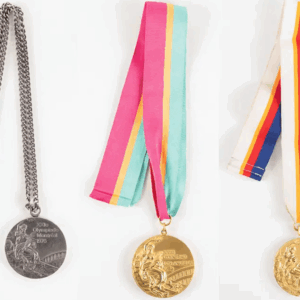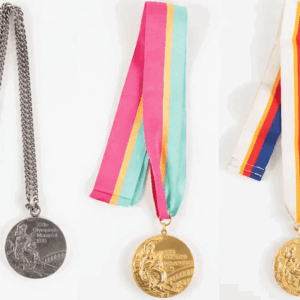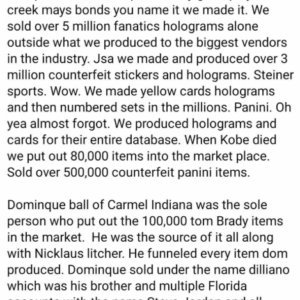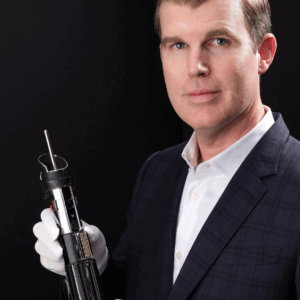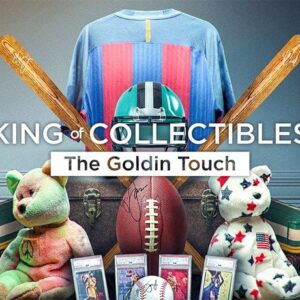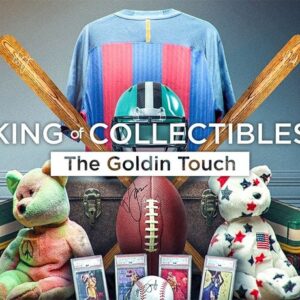In the gripping saga of the sports memorabilia world, the tale of Brett Lemieux’s rise and fall unfolds more drama than a weekend sports binge. Picture this: a charismatic autograph dealer, revered and trusted among peers, secretly orchestrates a counterfeit scheme as sprawling and robust as any underdog team clawing its way to championship glory. But unlike in the movies, this story doesn’t have a rousing victory; rather, it simmers with betrayal and a tragic conclusion.
Brett Lemieux, 45, was regarded as an influencer in the autograph community. Unfortunately, it was his cryptic confession—posted in the digital echoes of the “Autographs 101” Facebook group—that sent a tremor through the world of sports collectibles, equivalent to a game-winning buzzer-beater suddenly called back. Lemieux confessed to a dizzying level of fraud, allegedly flooding the sports memorabilia markets with over four million counterfeit items. That’s enough fraudulent memorabilia to field more teams than the league commissioners care to count, and purported sales scaling up to a staggering $350 million.
This grand scheme crumbled under scrutiny when Indiana authorities, while executing a search warrant in Westfield, stumbled upon Lemieux’s lifeless body. The tragic discovery of his death, ruled an apparent self-inflicted gunshot wound, punctuated the raid with a poignant exclamation mark. Although questions remain about the exact cause, his departure plunged his grand counterfeit operation directly into the spotlight.
Operating as Mister Mancave—a business that grandly advertised “the largest framed jersey inventory on the web”—Lemieux spun a web of deception that could make a spider envious. His operation, having roots deeply embedded in Indiana while masquerading as an entity equipped with an Ohio address, steered the fraudulent ship through unassuming waters for years.
Central to Lemieux’s deceit were the hologram stickers mimicking those from renowned authentications firms: Panini, Fanatics, Tri-Star, and James Spence Authentics. After Kobe Bryant’s tragic demise in 2020, Lemieux claimed to have released a staggering 80,000 imitation Bryant memorabilia items, each with counterfeit holograms convincing enough to fool the wary eyes of collectors and fans who still grapple with his loss.
The rush for quick deals in this underworld of sporting relics, fueled by a concoction of nostalgia and naiveté, was nothing short of torrential. Consider an Aaron Judge-signed baseball, offered on Lemieux’s platform at a tantalizing $399—far cheaper than the $699 charged by the reputable Fanatics. Such deals, dripping in allure and fake authenticity, fizzled under scrutiny reminiscent of a star athlete’s fall from grace.
Now, as collectibles’ integrity lies in tatters, industry players like Fanatics are scrambling for damage control. Fanatics has been refining its hologram technology, combining high-tech wizardry with expert insight from former FBI operatives. They’re on a mission to separate the genuine articles from the sea of imposters.
Skepticism abounds around the numbers Lemieux cited. Competitors wave off the $350 million claim as implausible—perhaps as farfetched as one autograph fanatic recounting tales of obtaining Babe Ruth’s signature yesterday. Nonetheless, the palpable damage rings loud and clear across the sports memorabilia markets.
Steve Grad, a guru in the art of autograph authentication, opines on the trickiness of rooting out fakes. In a world teeming with sophisticated forgeries and deceptive appliances like autopens, the task has grown beyond Herculean proportions. The ripple effects of this scandal are set to cascade through collector circles for years to come.
Predictably, whispers within the industry hint at foreknowledge. Tales from fellow dealers paint Lemieux as purveyor of signatures from athletes who hadn’t penned their autograph in years. Meanwhile, Dominique Ball of Indiana and Nickolas Litscher from Wisconsin, both mentioned in Lemieux’s confessional narrative, staunchly negate any associations. Litscher, particularly vocal, is lawyering up in defense of his name tarnished by the storm’s aftermath.
Authorities are hunting down the many faces of Lemieux’s enterprise, each donned by different business monikers like Ultimate Sports and Athletes One, thereby reinforcing the eerie omnipresence of his counterfeit conglomerate.
While the law trudges through this intricate fraud labyrinth, the hobby—once a realm of joy and memorabilia pride—finds itself in reflective chaos. Collectors now, with renewed skepticism, turn to evaluate the authenticity of their cherished mementos. This scandal, more than a mere flicker in the newsreel, serves as a stark reminder of the vigilance required in guarding the gates of nostalgia, the memories tied to every ball, jersey, and helmet. The world of sports memorabilia stands poised at a crossroads, navigating the turbulent seas of trust, authenticity, and the relentless pursuit of preserving sporting legacies.

